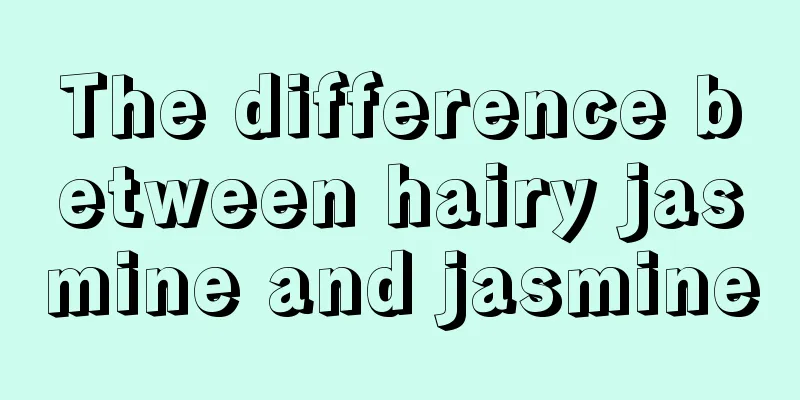The difference between hairy jasmine and jasmine

Hairy JasmineThe hairy jasmine is native to India and blooms in both spring and winter. Growth habits of hairy jasmine: Hairy jasmine prefers a sunny environment and loose, fertile soil, and is suitable for growing in a warm environment. Jasmine is mainly propagated by cuttings in spring and summer. As long as the temperature is warm and there is enough light, it will grow and bloom. Appearance of hairy jasmine: The branches of hairy jasmine are slender and curved, cylindrical and covered with yellow-brown hairs. The leaves of hairy jasmine are heart-shaped, grow in pairs, are green, and have a smooth surface or short hairs. The petiole is long, with joints at the bottom of the petiole, which are also covered with hairs. The flowers of hairy jasmine grow in a cone-shaped cyme shape, growing at the top of the branches or under the leaf axils. The pedicels are relatively short and the corolla is white and butterfly-shaped. The flowers of the hairy jasmine are white and emit a faint fragrance, comparable to that of jasmine. JasmineJasmine, like hairy jasmine, is native to India. It blooms from May to August each year. The flowers are extremely fragrant and have great value as tea material. Jasmine's growth habits: Jasmine prefers ventilated and warm environment, and does not require much light, but pay attention to shade. In a cold environment, move it indoors for maintenance. The soil for growth should be rich in humus and acidic sandy soil. Appearance of jasmine: The branches of jasmine are cylindrical or flat, hollow and covered with soft hairs. The leaves of jasmine are round, oval or ovate. The leaves are rounded or blunt on both sides, and the petioles have short soft hairs and joints. The shape of the jasmine flower is three flowers together in a cymose shape, the pedicel is conical, the corolla is white, the entire flower looks white, and the petals are larger than those of the hairy jasmine. The flowers and their fragrance are high-quality products for tea raw materials. Jasmine tea is very effective in dispelling cold and refreshing breath. |
<<: Does the miniature coconut palm bloom?
>>: The difference between jiexiang and daphne
Recommend
How to fertilize cabbage more effectively?
Cabbage, also known as cabbage, Chinese cabbage, ...
Cultivation methods and precautions of trifoliate orange
1. Soil Growing trifoliate oranges requires ferti...
How to grow Chinese evergreen
1. Lighting The indoor growing environment of Chi...
How to plant golden bells
1. Growth habits of golden bell flower To grow go...
She grew one kind of flower to the point where it was invincible, better than 10 other people’s gardens!
Margaret Margarite is a kind of flower that Huahu...
Common pests of white clover and their control methods
Common pests of white clover: leafhoppers Pest sy...
What is the best month to plant Hangbaicai?
When is the best month to plant Hangbai cabbage? ...
Can Phalaenopsis be exposed to rain? Can it be placed outside when it rains?
Phalaenopsis is a water-loving plant because it i...
How to grow potted jasmine at home
Jasmine flowers are white and fragrant, and they ...
How to care for the newly bought lotus
1. How to deal with the newly bought lotus 1. Pur...
How to grow chicory in potted plants on the balcony?
Potting method 1. Choose slightly fine soil and s...
Common Pests of Teyu Lotus and Their Control Methods
Common pests of Teyulian: root-knot nematodes Roo...
How to grow orchids and the price of orchids
1. How to grow orchids Soil selection: When plant...
The fallen leaves were inserted into the soil, and the pot was full of flowers the next year.
African violet African violet is a plant of the G...
How to propagate and propagate weeping jasmine?
The weeping jasmine is also called the white jade...









